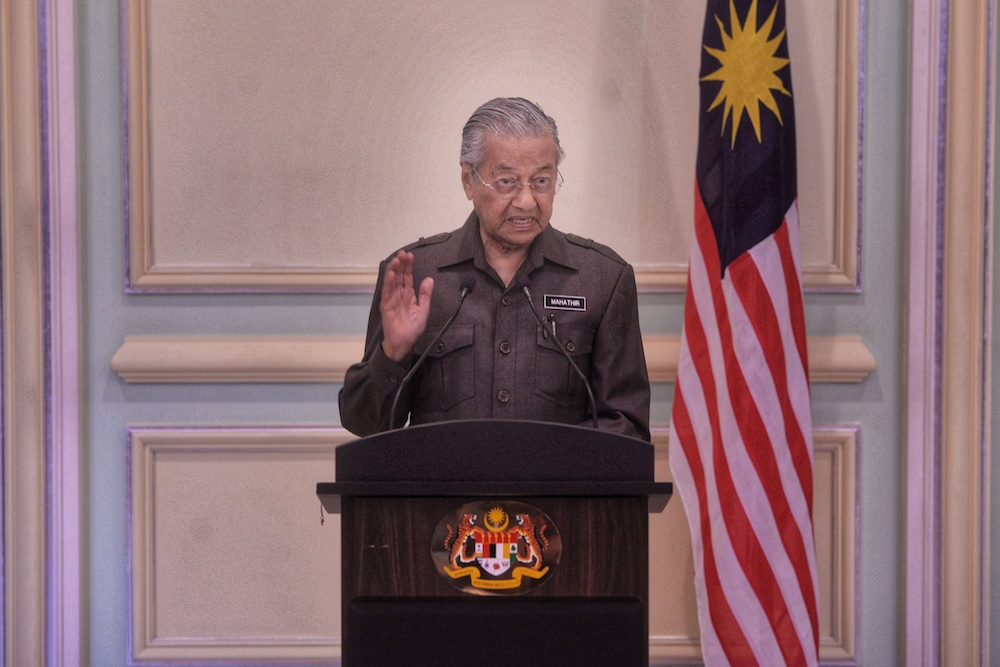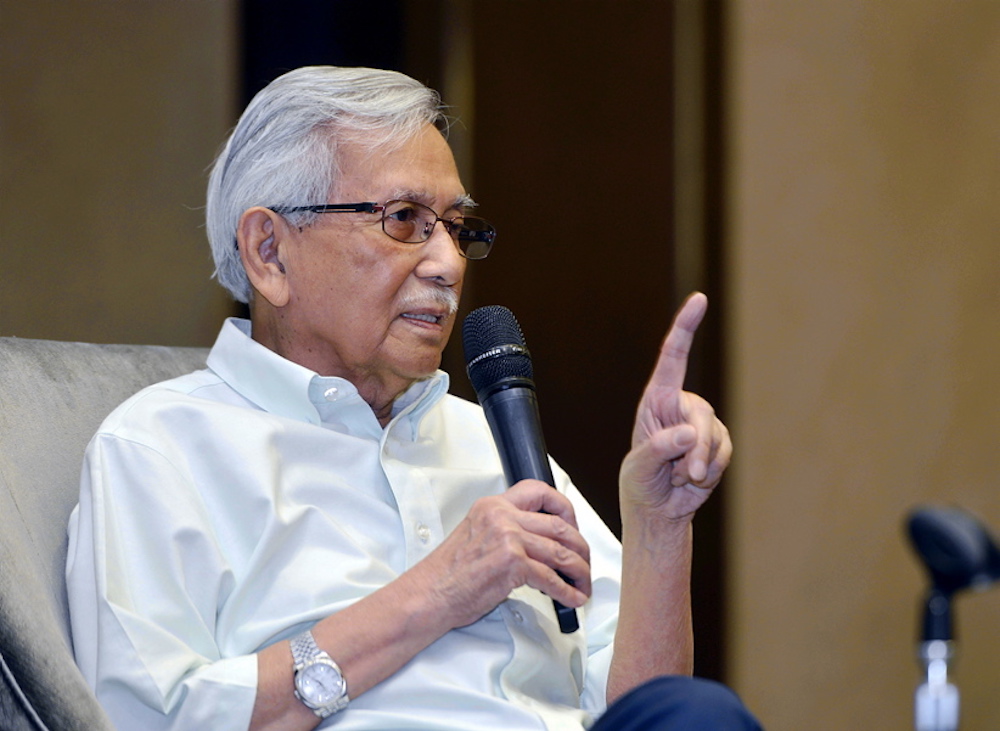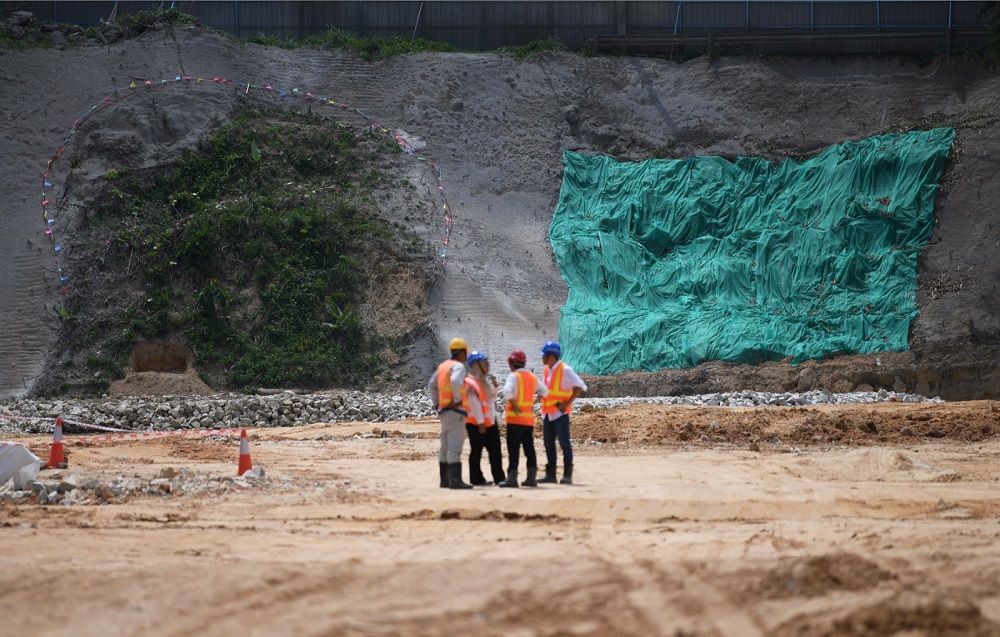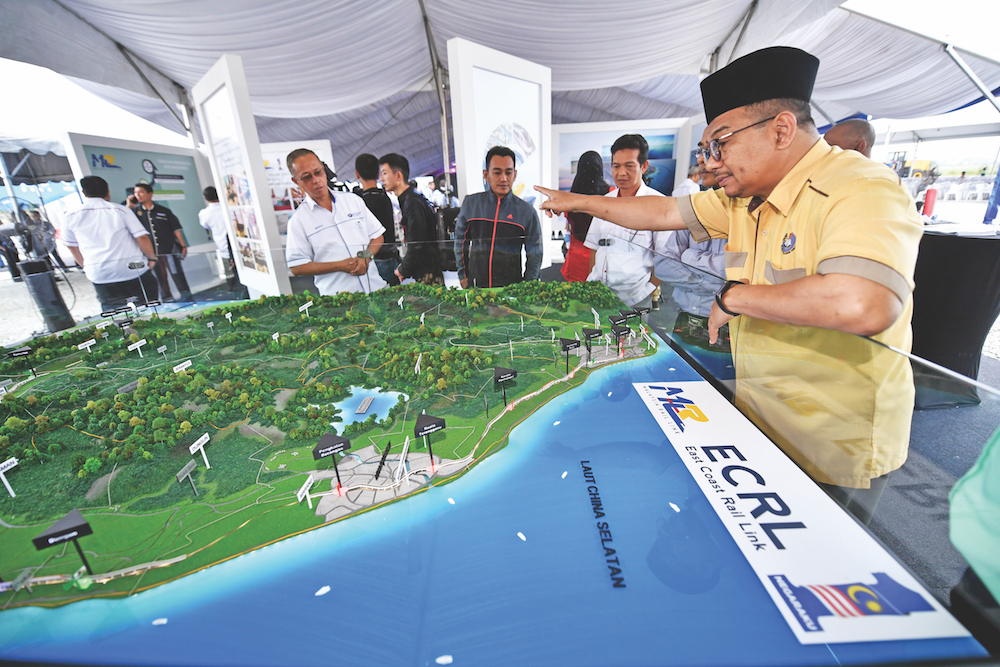KUALA LUMPUR, April 16 — Arguably one of the most ambitious mega-projects Putrajaya has embarked on, the initially suspended East Coast Rail Link (ECRL) project is finally back on track, after months of negotiations, led by former finance minister Tun Daim Zainuddin.
The project was shelved after Pakatan Harapan (PH) ousted Barisan Nasional (BN) in the general election last year, due to its egregious cost.
The Prime Minister’s Office (PMO) on Friday announced that Malaysia Rail Link Sdn Bhd (MRLSB) and China Communications Construction Company (CCCC) Ltd had signed a supplementary agreement that will pave the way for the resumption of the China-backed project.
The construction cost for Phases 1 and 2 of the ECRL has now been now reduced to RM44 billion, a reduction of RM21.5 billion from its original cost of RM65.5 billion.
Dr Mahathir’s office announced that the reduced construction cost for the ECRL project was achieved via a comprehensive value engineering exercise and a new southern alignment.
So what are we getting from it this time?

A huge refund
Remember the feeling of watching your Inland Revenue Board (IRB) refunds being reflected in your bank account?
Now take that feeling and multiply it by three (or four). The new ECRL means Malaysia is getting part of the RM3.1 billion advance payment back from China, for the ECRL Phase 2, Double Tracking and the Northern Extension under the original contract, according to Bernama.
Dr Mahathir reportedly said that RM500 million will be refunded within a week from April 12, 2019, with a further RM500 million to be returned within a month from said date.
The balance he said, will be settled within three months, after deductions for verified claims due to abortive works, suspension and cancellation of the northern extension.

The players and the connections
MRLSB is the project and asset owner of electrified rail network, and is the special purpose vehicle (SPV) owned by the Minister of Finance Incorporated (MOF Inc).
CCCC meanwhile, is the engineering, procurement, construction and commissioning (EPCC) contractor for the railway project which will bridge the east coast and west coast of Peninsular Malaysia by connecting Kota Baru in Kelantan to Port Klang in Selangor.
The ECRL will connect five states and one federal territory namely; Kelantan, Pahang, Terengganu, Negri Sembilan, Selangor and Putrajaya.
The revised alignment will see a direct link from the Kuantan Port to Port Klang, and will serve as a Iand bridge connecting them.
New alignment will avoid the Klang Gates Quartz Ridge in Selangor which is being established as a United Nations Educational, Scientific and Cultural Organisation (UNESCO) World Heritage site.

The hits and misses
Following renegotiations, the government announced that MRLSB and CCCC signed three supplementary agreements to the EPCC Contract on April 12, to restart the suspended ECRL project, at a much lower cost.
The new alignment will now no longer see the construction of the initial 17.8km long Genting Tunnel from Bentong to Gombak, albeit remaining a double-track.
It will also avoid the Klang Gates Quartz Ridge in Selangor, which is to be declared as a World Heritage site.

The improved ECRL project will now cost RM68.7 million per km, compared to RM95.5 million per km under the original agreement.
The new alignment will run through 20 stations, among others, from Kota Baru to Kuala Terengganu, Kuantan, Mentakab and proceed to Jelebu, Bangi/Kajang, Putrajaya Sentral and onto Port Klang.
The alignment would be at a length of 640km, and it will cater to both passenger and freight train services.
With six electric trains, the ECRL will have a travel speed of 160km per hour for passenger train, and 80 km per hour for freight train, and will boast of three interchanges.
The ECRL tracks will also leverage on the Express Rail Link (ERL) and the upcoming MRT2 SSP (Sungai Buloh-Serdang-Putrajaya) line, with an interchange in Putrajaya to connect those travelling to the city centre and the Kuala Lumpur International Airport (KLIA).

Economic catalyst for coastal area inhabitants
The ECRL would act as an economic booster for residents in the east and west coast part of Peninsula Malaysia, as with the reduction in travel time by almost half, more tourists and business people are expected to use the ECRL.
This in turn, is also expected to aid in job creation, leading to the general improved socio-economic well-being of residents in the east coast states.
For a start, the project itself would see an increased participation by local contractors, under the said supplementary agreements.
The PMO said that this would lead to the creation of more Malaysian rail workers, and intensify rail technology transfer via the Operation & Maintenance joint venture between MRLSB and CCCC.




















